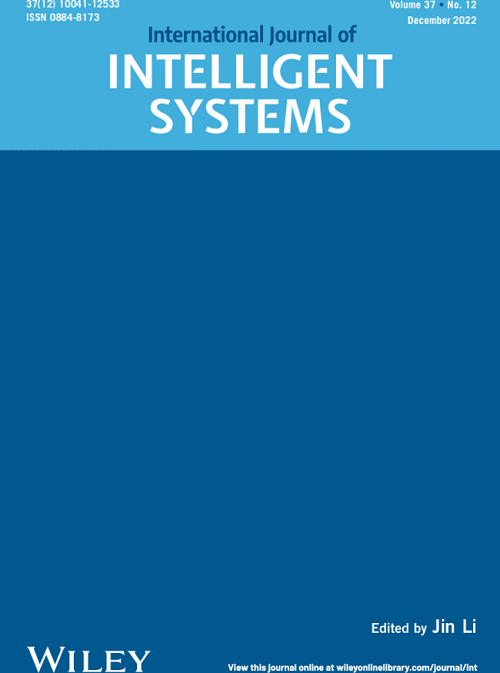Exploring the Effect of Image Enhancement Techniques with Deep Neural Networks on Direct Urinary System (DUSX) Images for Automated Kidney Stone Detection
IF 5
2区 计算机科学
Q1 COMPUTER SCIENCE, ARTIFICIAL INTELLIGENCE
引用次数: 0
Abstract
In diagnosing kidney stone disease, clinical specialists often apply medical imaging techniques such as CT and US. Among these imaging techniques, is frequently chosen as the primary examination method in emergency services due to its low cost, accessibility, and low radiation levels. However, interpreting the images by inexperienced specialists can be challenging due to the low image quality and the presence of noise. In this study, we propose a computer-aided diagnosis system based on deep neural networks to assist clinical specialists in detecting kidney stones using Direct Urinary System (DUSX) images. Firstly, in consultation with clinical specialists, we created a new dataset composed of 630 DUSX images and presented it publicly. We also defined preprocessing steps that incorporate image enhancement techniques such as GF, LoG, BF, HE, CLAHE, and CBC to enable deep neural networks to perceive the images more clearly. With these techniques, we considered the noise reduction in the DUSX images and enhanced the poor quality, especially in terms of contrast. For each preprocessing step, we created models to detect kidney stones using YOLOv4 and Mask R-CNN architectures, which are common CNN-based object detectors. We examined the effects of the preprocessing steps on these models. To the best of our knowledge, the combination of BF and CLAHE which is called CBC in this study, has not been applied before in the literature to enhance DUSX images. In addition, this study is the first in its field in which the YOLOv4 and Mask R-CNN architectures have been used for the detection of kidney stones. The experimental results demonstrated the most accurate method is the YOLOv4 model, which includes the CBC preprocessing step, as the result model. This model shows that the accuracy rate, precision, recall, and F1-score were found as 96.1%, 99.3% 96.5%, and 97.9% respectively in the test set. According to these performance metrics, we expect that the proposed model will help to reduce the unnecessary radiation exposure and associated medical costs that come with CT scans.利用深度神经网络探索图像增强技术对直接泌尿系统 (DUSX) 图像进行自动肾结石检测的效果
在诊断肾结石疾病时,临床专家经常使用CT和US等医学成像技术。在这些成像技术中,由于其低成本、可及性和低辐射水平,经常被选择作为紧急服务的主要检查方法。然而,由于图像质量低和噪声的存在,没有经验的专家解释图像可能具有挑战性。在这项研究中,我们提出了一个基于深度神经网络的计算机辅助诊断系统,以协助临床专家使用直接泌尿系统(DUSX)图像检测肾结石。首先,在与临床专家协商后,我们创建了一个由630张DUSX图像组成的新数据集,并向公众展示。我们还定义了包含GF、LoG、BF、HE、CLAHE和CBC等图像增强技术的预处理步骤,以使深度神经网络能够更清楚地感知图像。通过这些技术,我们考虑了DUSX图像中的降噪,并改善了差的质量,特别是在对比度方面。对于每个预处理步骤,我们使用YOLOv4和Mask R-CNN架构创建模型来检测肾结石,这是常见的基于cnn的对象检测器。我们检查了预处理步骤对这些模型的影响。据我们所知,本研究中还没有将BF和CLAHE的结合称为CBC,用于增强DUSX图像。此外,本研究是该领域首次将YOLOv4和Mask R-CNN架构用于肾结石的检测。实验结果表明,最准确的方法是包含CBC预处理步骤的YOLOv4模型作为结果模型。该模型显示,在测试集中,准确率为96.1%,精密度为99.3%,召回率为96.5%,f1分数为97.9%。根据这些性能指标,我们期望所提出的模型将有助于减少不必要的辐射暴露和CT扫描带来的相关医疗费用。
本文章由计算机程序翻译,如有差异,请以英文原文为准。
求助全文
约1分钟内获得全文
求助全文
来源期刊

International Journal of Intelligent Systems
工程技术-计算机:人工智能
CiteScore
11.30
自引率
14.30%
发文量
304
审稿时长
9 months
期刊介绍:
The International Journal of Intelligent Systems serves as a forum for individuals interested in tapping into the vast theories based on intelligent systems construction. With its peer-reviewed format, the journal explores several fascinating editorials written by today''s experts in the field. Because new developments are being introduced each day, there''s much to be learned — examination, analysis creation, information retrieval, man–computer interactions, and more. The International Journal of Intelligent Systems uses charts and illustrations to demonstrate these ground-breaking issues, and encourages readers to share their thoughts and experiences.
文献相关原料
| 公司名称 | 产品信息 | 采购帮参考价格 |
|---|
 求助内容:
求助内容: 应助结果提醒方式:
应助结果提醒方式:


